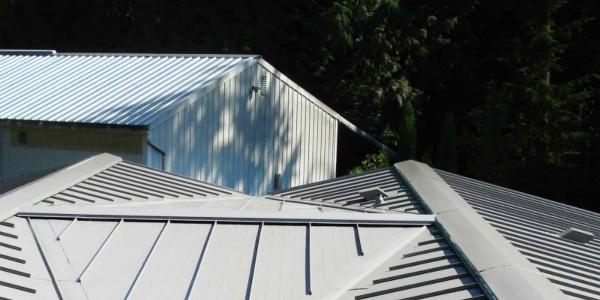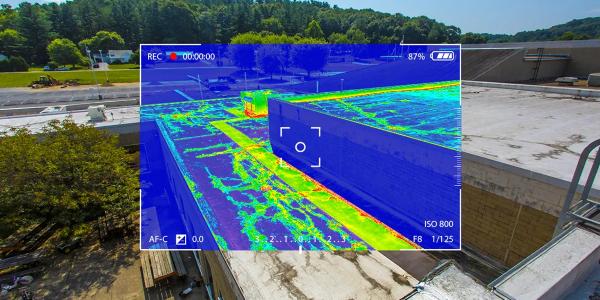Sustainability Reaches New Heights: Designing a Green Roof

By Elite Roofing.
Explore green roof systems in one city in New Jersey and see how you can implement and promote green roofs in your area!
Green roofs continue to gain popularity across the United States, particularly in urban areas where pollution is high. They provide huge benefits to the environment to help address the urban heat island effect and bring vegetation back to the city. Jersey City, New Jersey is one of many cities encouraging, and in some cases, requiring the design of green roofs on roof decks. Learn about the advantages of selecting a green roof and how to choose local vegetation for the perfect rooftop ecosystem in the heart of New Jersey.
What is a green roof?
A green roof, also known as a living roof or vegetated roof, is a roofing system that incorporates vegetation, soil and drainage layers on top of a conventional roof. It transforms an otherwise underutilized space into a flourishing ecosystem, often featuring a variety of plants, trees and even small gardens.
Benefits of green roofs
- Stormwater management: Green roofs absorb rainwater, reducing the burden on stormwater systems and minimizing the risk of flooding.
- Improved air quality: Plants on green roofs capture and filter pollutants, leading to cleaner air in urban areas.
- Energy efficiency: The vegetation layer insulates the building, reducing the need for excessive heating and cooling, thus lowering energy consumption and costs.
- Urban heat island mitigation: Green roofs help combat the urban heat island effect by absorbing solar radiation and releasing it slowly, thereby reducing ambient temperatures.
- Biodiversity enhancement: Green roofs provide a habitat for birds, insects and other wildlife, promoting urban biodiversity.
Requirements for a green roof in Jersey City, New Jersey
To implement a green roof in Jersey City, several factors must be considered. The key requirements include:
Structural considerations
- It is crucial to assess the structural integrity of the building to determine if it can support the additional weight of a green roof.
- Consultation with a structural engineer is recommended to ensure the roof can withstand the load and any associated maintenance.
Building permits and codes
- Obtain the necessary building permits and comply with the local building codes and regulations in Jersey City, New Jersey.
- Check with the local municipal authority or building department for specific guidelines regarding green roof installations.
Waterproofing and drainage
- Ensure proper waterproofing and drainage systems to prevent water leakage and damage to the building's structure.
- Consult with a professional roofing contractor experienced in green roof installations to ensure effective waterproofing.
Maintenance and irrigation
- Establish a regular maintenance plan to ensure the longevity and health of a green roof.
- Implement an irrigation system to provide adequate water to the plants, particularly during dry periods.
Plant selection
- Choose plant species that are well-suited to the local climate, Jersey City’s hardiness zone, and the specific environmental conditions of the rooftop.
- Considered drought-tolerant plants that require minimal maintenance and can thrive in the rooftop environment.
Plant options for a thriving ecosystem
When it comes to creating a vibrant and sustainable green roof in Jersey City, New Jersey, selecting the right plants is essential. The plant choices not only contribute to the aesthetic appeal but also determine the success and functionality of the rooftop ecosystem. Read on to explore the various plant options that thrive in the local climate, ensuring a flourishing green roof in the heart of Jersey City.
Sedums
Sedums are a popular choice for green roofs due to their adaptability and low maintenance nature. These succulent plants come in a variety of colors, including green, red and yellow. Sedums are known for their ability to withstand drought conditions and thrive in shallow soil depths, making them ideal for the limited growing media typically found on green roofs.
Native grasses
Incorporating native grasses into your green roof design not only adds visual interest but also supports local biodiversity. Species such as Little Bluestem (Schizachyrium scoparium) and Switchgrass (Panicum virgatum) are well suited to Jersey City’s climate and provide a naturalistic look to the rooftop landscape. Native grasses are generally drought-tolerant and require minimal maintenance.
Wildflowers
Including a variety of wildflowers on your green roof can create an enchanting and colorful display while attracting pollinators such as bees and butterflies. Consider incorporating species like Black-eyed Susan (Rudbeckia hirta), purple coneflower (Echinacea purpurea) or New England aster (Symphyotrichum novae-angilae). These native wildflowers can thrive in the local climate and provide essential food and habitat for pollinators.
Herbaceous perennials
Adding herbaceous perennials to your green roof can provide seasonal interest and texture. Plants like daylilies (Hemerocallis spp.), coreopsis (Coreopsis spp.) and salvia (Salvia spp.) are excellent choices. These perennials return year after year, requiring minimal maintenance and offering a variety of colors and heights to create a visually appealing rooftop garden.
Ornamental grasses
Ornamental grasses are known for their graceful movement, architectural structure and ability to withstand harsh conditions. Jersey City green roofs can benefit from incorporating species such as feather reed grass (Calamagrostis x acutiflora), maiden grass (Miscanthus sinesis) or switchgradd (Panicum virgatum). These grasses add texture, height and year-round interest to the rooftop landscape.
Dwarf shrubs and small trees
If the structural integrity and weight-bearing capacity of your green roof allow, consider incorporating dwarf shrubs or small trees. These additions can provide vertical interest and shade, enhancing the rooftop environment. Examples of suitable choices include dwarf Alberta spruce (Picea glauca ‘Conica’) Japanese maple (Acer palmatum) or blue star juniper (Juniperus squamata ‘blue star’).
What if there is a roof deck?
It is important to note that in Jersey City, New Jersey, it is a requirement by the city to make a roof a green roof if you are looking to install a roof deck to the roof that covers more than 30% of the roof's surface.
Green roofs offer an innovative and sustainable approach to urban development, transforming rooftops into vibrant ecosystems with multiple environmental benefits. In Jersey City, New Jersey, implementing a green roof requires careful consideration of structural integrity, permits, waterproofing, plant selection and ongoing maintenance. By embracing green roofs, Jersey City can enhance its sustainability efforts, mitigate urban heat, improve stormwater management and contribute to the overall wellbeing of its residents and the environment.
Original article source: Elite Roofing
Learn more about Elite Roofing in their Coffee Shop Directory or visit eliteroofingincnj.com.





















Comments
Leave a Reply
Have an account? Login to leave a comment!
Sign In